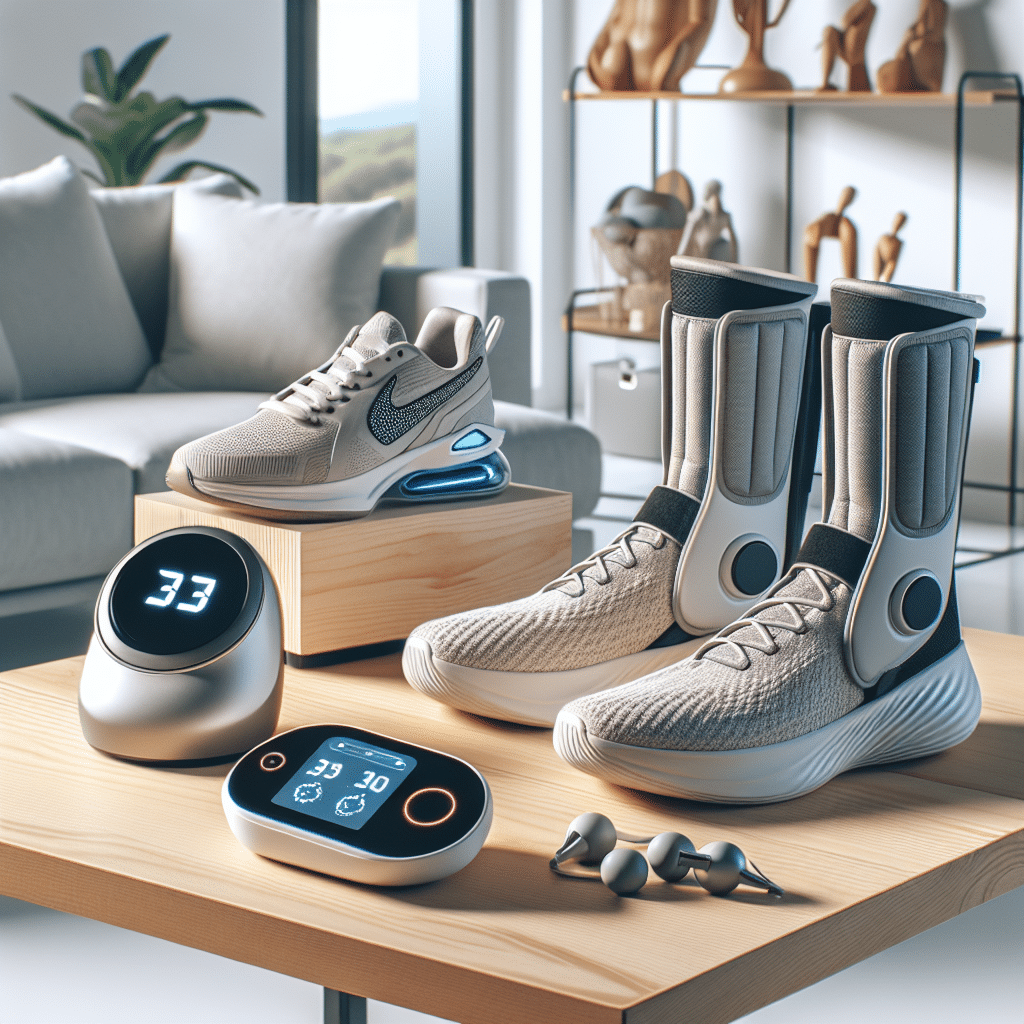Understanding Restless Legs Syndrome (RLS)
Restless Legs Syndrome (RLS) is a neurological disorder that causes an uncontrollable urge to move one’s legs, typically due to uncomfortable sensations. Affected individuals often experience symptoms during periods of inactivity or rest, particularly during the evening or night, leading to sleep disturbances. Symptoms of RLS can range from mild discomfort to severe pain, significantly affecting one’s quality of life.
Smart Gadgets for Monitoring and Managing RLS
1. Wearable Sleep Trackers
Wearable sleep trackers provide valuable insights into your sleep patterns and help in managing RLS symptoms. Devices like the Fitbit or Oura Ring monitor your sleep stages, heart rate, and movements throughout the night. By understanding your sleep patterns, you can identify factors that may exacerbate RLS symptoms, leading to better management and strategies for improvement.
2. Smart Massage Devices
Massage can help relieve RLS symptoms by promoting circulation and relaxing muscle tension. Smart massage devices, such as the iReliev TENS unit or modern percussion massagers, offer customizable settings for intensity and duration. These devices can target specific areas affected by RLS, easing discomfort and promoting relaxation before bedtime.
3. Leg Compression Socks
Smart compression socks, like the Physix Gear Sport Compression Socks, use graduated compression technology to improve blood circulation. Enhanced circulation can help reduce the discomfort associated with RLS. Some models even integrate smart features, such as sensors that track circulation levels and alert users when they need to adjust their compression settings.
4. Smart Temperature Control Devices
Temperature can significantly impact RLS symptoms. Smart heating pads or coolers, such as Thermophore or the Chillow Cooling Pad, can provide targeted thermal therapy. Many of these devices come with programmable features, allowing users to set specific temperatures and durations to find the optimal relief for their RLS symptoms.
5. Bedside Sleep Aids
Smart bedside sleep aids, such as the Hatch Rest+ or the Loona Sleep Light, help create an ideal sleep environment. These devices combine soft lighting and sound features to promote relaxation. Many smart sleep aids come with white noise machines or nature sounds that can drown out distractions and soothe individuals struggling with RLS-related insomnia.
Lifestyle Integration: Smart Home Gadgets
6. Smart Thermostats
Maintaining an optimal room temperature can be crucial for managing RLS symptoms. Smart thermostats, like the Nest Learning Thermostat, allow you to adjust your home’s temperature remotely. By ensuring your sleeping environment is neither too hot nor too cold, you may reduce RLS flare-ups induced by discomfort during sleep.
7. Smart Lighting Systems
Circadian rhythm plays a vital role in sleep quality. Smart lighting systems, such as Philips Hue bulbs, can mimic natural sunlight and help regulate your sleep-wake cycle. Dimming lights in the evening can signal your body that it’s time to wind down, potentially alleviating RLS symptoms that escalate during periods of inactivity.
8. Automated Home Exercise Equipment
Engaging in regular physical activity can help mitigate RLS symptoms. Smart fitness equipment, like Peloton or Bowflex, offers guided workouts tailored to individual fitness levels. Integrating low-impact exercise routines can help alleviate symptoms and improve overall mobility, ensuring those with RLS remain active and engaged.
Advanced Technology for Relief
9. Neuromodulation Devices
Emerging neuromodulation technologies, like the Relivion device, provide promising treatments for RLS. This innovative gadget delivers electrical impulses through the skin, targeting nerve pathways that may be responsible for RLS symptoms. By stimulating these nerves, users report reduced discomfort and improved quality of life.
10. Smart TENS Units
Transcutaneous Electrical Nerve Stimulation (TENS) units are effective tools for pain management. Smart TENS devices such as iReliev and ComfySure allow personalized settings through mobile apps. These units can help alleviate pain associated with RLS by targeting specific muscle groups in the legs with customizable electrical impulses.
11. Biofeedback Devices
Biofeedback devices, like Muse or Heartrate Variability (HRV) monitors, train individuals to control physiological functions by providing real-time feedback on body parameters. Learning to regulate your body’s stress response can significantly improve RLS symptoms. By practicing relaxation techniques informed by biofeedback, users can decrease muscle tension and discomfort.
Convenience and Integration
12. Voice-Activated Assistants
Integrating voice-activated assistants like Amazon Alexa or Google Home can enhance your smart home setup. Programs can remind you to engage in light stretching exercises or to take breaks from inactivity, specifically designed to mitigate RLS instances. Using voice commands, you can control any connected smart devices to create a relaxing sleep environment.
13. Smart Apps for Leg Exercises
Apps like Restless Legs Syndrome Foundation’s RLS Guide or My RLS App provide tailored exercises and tips for dealing with RLS symptoms. Integration with wearables can also track how physical activity and leg movements correlate with symptoms over time, helping users make better-informed lifestyle choices.
14. Smart Alarms and Reminders
Setting reminders for regular activity breaks or stretching sessions can mitigate RLS symptoms. Smartwatches and mobile apps allow you to schedule these reminders, ensuring you stay active throughout the day. Breaking up prolonged periods of sitting with short walks or leg stretches can prevent RLS flare-ups.
Conclusion
Restless Legs Syndrome can hinder the quality of life and disturb sleep. However, through the integration of smart gadgets, individuals can effectively monitor and manage their RLS symptoms. Whether through sleep trackers, smart massage devices, or innovative therapies, leveraging modern technology can significantly enhance well-being for those living with this condition. By focusing on a holistic approach that incorporates smart home technology and lifestyle adjustments, dealing with RLS can become more manageable, leading to a better quality of life.
